
In criminology, the broken windows theory states that visible signs of crime, antisocial behavior, and civil disorder create an urban environment that encourages further crime and disorder, including serious crimes. The theory suggests that policing methods that target minor crimes such as vandalism, loitering, public drinking and fare evasion help to create an atmosphere of order and lawfulness.

The Chicago Police Department (CPD) is the primary law enforcement agency of the city of Chicago, Illinois, United States, under the jurisdiction of the Chicago City Council. It is the second-largest municipal police department in the United States, behind the New York City Police Department. As of 2022 CPD had 11,710 sworn officers on duty, and in 2020 had over 948 other employees. Tracing its roots to 1835, the Chicago Police Department is one of the oldest modern police departments in the world.

Crime mapping is used by analysts in law enforcement agencies to map, visualize, and analyze crime incident patterns. It is a key component of crime analysis and the CompStat policing strategy. Mapping crime, using Geographic Information Systems (GIS), allows crime analysts to identify crime hot spots, along with other trends and patterns.

The Columbus Division of Police (CPD) is the primary law enforcement agency for the city of Columbus, Ohio, in the United States. It is the largest police department in Ohio, and among the twenty-five largest in the United States. It is composed of twenty precincts and numerous other investigative and support units. Chief Elaine Bryant assumed leadership of the Division in 2021. Special units of the Columbus Division of Police include a Helicopter Unit, Canine Unit, Mounted Unit, Community Response Teams, Marine Park Unit, and Special Weapons and Tactics Team (SWAT).
Chicago Alternative Policing Strategy (CAPS) is a community driven policing strategy designed for the Chicago Police Department that aims to bridge the gap between the police force and the citizens of Chicago. CAPS started in 1993 as a pilot program in five of the 25 police districts in Chicago - Englewood, Marquette, Austin, Morgan Park, and Rogers Park - after a realization that the community and police were becoming increasingly isolated from one another throughout Chicago since the early 1960s. The original five districts, characterized by high crime rates and cases of extreme poverty, provided the Chicago Police Department with an initial benchmark from which to determine the program's strengths and weaknesses. By 1995, the Chicago Police Department implemented CAPS across all Chicago neighborhoods with the goal of blending traditional policing strategies with alternative strategies aimed at encouraging community members and police to work together in order to prevent and control crime. The program's motto, "Together We Can," emphasizes the need for increased lines of communication between the community and the police, so that together they could come up with solutions for chronic neighborhood problems.
Operation Ceasefire (also known as the Boston Gun Project and the Boston Miracle) is a problem-oriented policing initiative implemented in 1996 in Boston, Massachusetts. The program was specifically aimed at youth gun violence as a large-scale problem. The plan is based on the work of criminologist David M. Kennedy.
Crime in Chicago has been tracked by the Chicago Police Department's Bureau of Records since the beginning of the 20th century. The city's overall crime rate, especially the violent crime rate, is higher than the US average. Gangs in Chicago have a role in the city's crime rate. The number of homicides in Chicago hit a 25-year high in 2021.
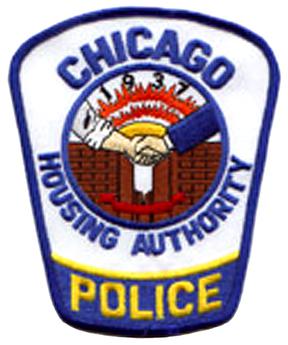
The Chicago Housing Authority Police Department (also known as the CHAPD) was created as a supplement to the Chicago Police Department (CPD), to provide dedicated police services to the residents of one of the nation's most impoverished and crime ridden developments for low-income housing. The CHAPD accomplished their daily goals by utilizing "community oriented policing techniques and aggressive vertical patrol" of all Chicago Housing Authority public housing projects throughout the inner city of Chicago, Illinois and some suburban areas.
Clarence O'Neal Bradford, known as C.O. "Clarence" Bradford, is a Houston City Council member, a former chief of police of Houston, Texas, and in 2008 an unsuccessful Democratic Party candidate for District Attorney of Harris County, Texas. On November 3, 2009, Bradford was elected to the Houston City Council from At-large Position 4 and took office January 2, 2010. In the 2011 election, Bradford won a second term as a Houston City Councilmember.

California Proposition 6, also known as the Safe Neighborhoods Act and The Runner Initiative, is a statutory initiative that appeared on the November 2008 ballot in California. This proposition was rejected by voters on November 4 of that year.

Violent Crime Impact Teams (VCIT) in the United States work proactively to identify, disrupt, arrest and prosecute the most violent criminals through innovative technology, analytical investigative resources and an integrated federal, state and local law enforcement strategy along with the leading federal law enforcement agency for the VCIT, the Bureau of Alcohol, Tobacco, Firearms and Explosives (ATF).
The Columbia Police Department (CPD) is the principal law enforcement agency serving the city of Columbia, Missouri in the United States. It protects a metropolitan population of nearly 127,000 with 187 sworn police officers.
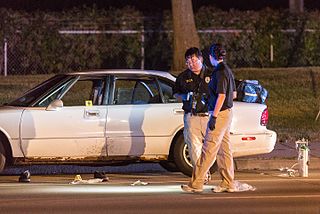
Crime in Minnesota encompasses a wide range of unlawful activities that occur within the state, regulated by both state and federal laws. While crime rates in Minnesota are generally below the national average, certain areas and types of crime have garnered public attention.
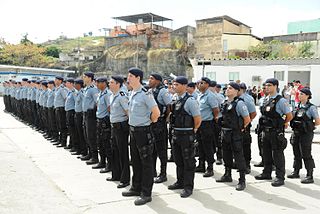
The Pacifying Police Unit, abbreviated UPP, is a law enforcement and social services program pioneered in the state of Rio de Janeiro, Brazil, which aims to reclaim territories, most commonly favelas, controlled by gangs of drug dealers. The program was created and implemented by State Public Security Secretary José Mariano Beltrame, with the backing of Rio Governor Sérgio Cabral. The stated goal of Rio's government is to install 40 UPPs by 2014. By May 2013, 231 favelas had come under the UPP umbrella. The UPP program scored initial success expelling gangs, and won broad praise. But the expensive initiative expanded too far, too fast into dozens of favelas as state finances cratered, causing a devastating backslide that enabled gangs to recover some of their lost grip.

Community policing or community-oriented policing (COP) is a strategy of policing that focuses on developing relationships with community members. It is a philosophy of full-service policing that is highly personal, where an officer patrols the same area for an extended time and develops a partnership with citizens to collaboratively identify and solve problems.
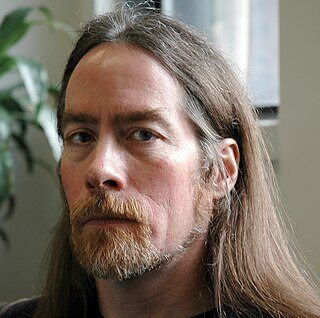
David M. Kennedy is a criminologist, professor, action researcher, and author specializing in crime prevention among inner city gangs, especially in the prevention of violent acts among street gangs. Kennedy developed the Operation Ceasefire group violence intervention in Boston in the 1990s and the High Point Model drug market intervention in High Point, North Carolina, in 2003, which have proven to reduce violence and eliminate overt drug markets in jurisdictions around the United States. He founded the National Network for Safe Communities in 2009 to support cities using these and related strategies.
In the United States, the war on gangs is a national movement to reduce gang-related activity, gang violence, and gang drug involvement on the local, state, and federal level. The war on gangs is a multi-lateral approach, as federal agencies seek to disrupt the cycle of violence through intervention with state police and social workers.
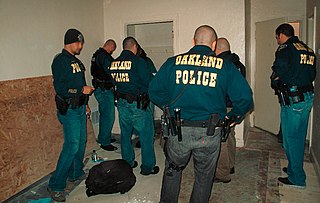
A gang intelligence unit (GIU) is an American law enforcement unit tasked with investigating, suppressing, and combatting gangs within a geographical location. They exist to provide safety as well as information regarding gang activity in an area, and are also commonly found within correctional facilities. GIUs seek advanced awareness of gang activity as a method to suppress gang violence. Intelligence forms the foundation of GIUs' efforts to suppress gang violence and crime and maintain safety within the community.

Kevin Kit Parker is a lieutenant colonel in the United States Army Reserve and the Tarr Family Professor of Bioengineering and Applied Physics at Harvard University. His research includes cardiac cell biology and tissue engineering, traumatic brain injury, and biological applications of micro- and nanotechnologies. Additional work in his laboratory has included fashion design, marine biology, and the application of counterinsurgency methods to countering transnational organized crime.

The Springfield Police Department is the law enforcement agency responsible for the city of Springfield, Massachusetts. The department consists of about 500 sworn personnel, approximately 420 patrol officers and 80 supervisors.

















